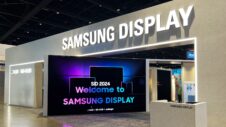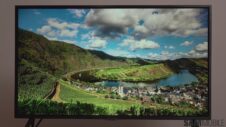The consumer electronics landscape has transformed over the past few years, with consumer demand dropping due to economic uncertainties and also changing and evolving according to people's lifestyles in the post-pandemic era. As a result, the CEO of Samsung Display believes that demand for self-luminous screens will rapidly grow to $100 billion over the remainder of the decade.
Choi Joo-sun, president and CEO of Samsung Display, attended the International Meeting of Information Display event earlier today and hosted a presentation on the display industry's future. Due to changes in the consumer electronics space, the CEO estimates that the self-luminous display market, i.e., OLED / QD-OLED and other variations based on similar technologies, will continue to grow. “I expect the self-luminous display market will grow rapidly to $100 billion by 2030,” said the CEO. (via TheKoreaTimes)
Samsung Display to increase investments and prepare for the new era
With more people working from home and increasingly relying on virtual platforms, demand is shifting towards self-luminous display technologies. Today's customers value better image quality and uninterrupted user experiences, and “this new trend is accelerating the era of self-luminous displays.” This year alone, the CEO estimates the self-luminous display segment to reach an estimated $40-45 billion.
Due to these changes, Samsung Display plans to increase its investments in eight-generation OLED manufacturing for IT devices as well as in-vehicle displays. The company recently reached an agreement with BMW to supply the German car manufacturer with OLED panels for in-car infotainment systems. Furthermore, Samsung will boost its spending in the virtual and augmented reality sector for the development of micro-displays.
In addition, Samsung is betting on QD-OLED display technology, which, according to the CEO, requires less energy and delivers a superior image quality compared to OLED and LCD panels. Samsung Display made new investments in material sciences and inkjet patterning technology for QD-OLED in order to increase image quality and improve production yields.






